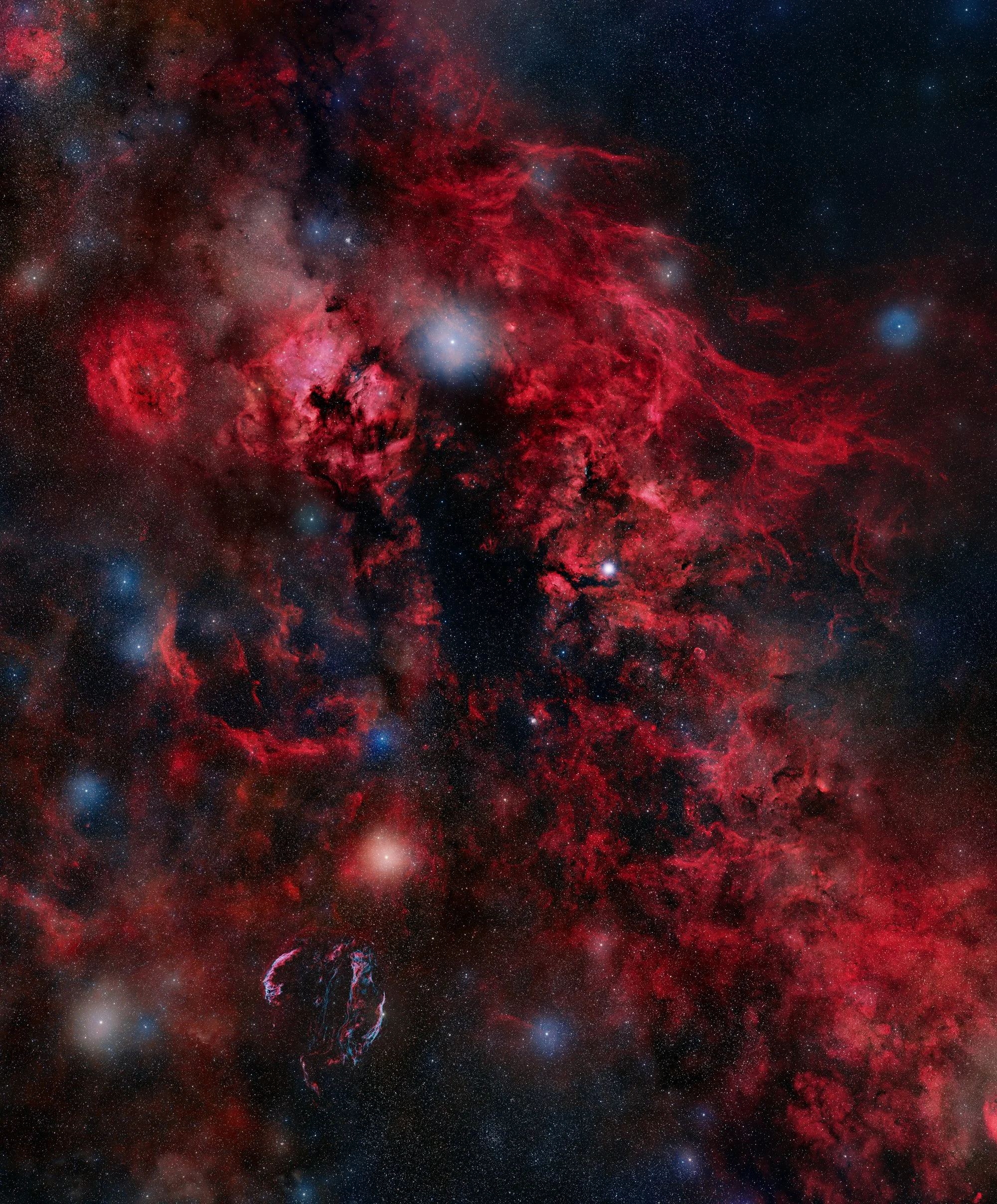
AAPOD2 Image Archives
Old dried trees and this amazing view of the Cygnus constellation
In the quiet solitude of ancient, gnarled trees, a celestial spectacle unfolds as the Cygnus constellation graces the night sky with its timeless elegance. Against the backdrop of old, dried branches, this captivating view presents a harmonious blend of natural elements and cosmic beauty.
The Cygnus constellation, marked by the distinctive Northern Cross asterism, becomes a celestial companion to the weathered trees, casting its stellar glow amidst the earthly silhouette. The juxtaposition of the timeless landscape and the cosmic ballet above creates a scene that transcends epochs, inviting observers to marvel at the enduring interplay between the terrestrial and the celestial. As stargazers absorb the ethereal ambiance of this scene, they are reminded of the profound connection between the ancient narratives etched in terrestrial landscapes and the enduring allure of the cosmic realms above.
Cygnus
This expansive super wide-field image provides a breathtaking view of the Cygnus region, immersing viewers in the cosmic symphony of this celestial expanse. Crafted using luminance (L), red, green, blue (RGB), and hydrogen alpha (Ha) filters, this LRGBHa composition accentuates the diverse and intricate features that define Cygnus. The Veil Nebula, can also be seen (lower left ) a testament to a stellar explosion millennia ago, against the vast backdrop of the Cygnus constellation.
The Ha data enriches the image, unveiling the subtle glow of ionized hydrogen amidst the stellar tapestry. The RGB channels bring to life the natural hues of stars and interstellar dust, creating a vibrant and captivating panorama that extends far beyond the immediate vicinity of the Veil Nebula. The Cygnus region takes center stage, with its prominent stars, dark nebulae, and cosmic clouds weaving together in a harmonious display.
cygnus mosaic
I have started this imaging project back at 2010. My aim was to make a high resolution mosaic covering the constellation Cygnus. Work like that takes time and patience, especially since I have worked so, that many of the individual sub mosaics or frames have been published as an individual artworks. Here is a poster format presentation about all of longer focal length images used for this mosaic beside wide field panels.
As a result I have now a huge 37 panel (And 58 long focal length sub-panel) mosaic panorama covering 28 x 18 degrees of sky. I have collected photons way over 600 hours during past ten years for this photo. The full size mosaic image has a size of about 25.000 x 15.000 pixels.
In the orientation image above, there are three large supernova remnants visible, first the Cygnus Shell W63 , bluish ring at upper left quarter, secondly the large SNR G65.3+5.7 at utmost right and finally the third is a brighter SNR, the Veil nebula just outside of field of view at bottom center. (Image is partly overlapping with large mosaic but I didn't want to include it yet due to artistic composition.)Beside three supernova remnants there are two Wolf Rayet stars with outer shell formations. NGC 6888, the Crescent Nebula at center of the image and the WR 134, it can be seen as a blue arch just right from the Crescent Nebula, near the Tulip nebula.Next to the Tulip Nebula lays a Black hole Cygnus X-1, it's marked in small closeup image of the Tulip Neula at center right in orientation image above.
There are 37 base panels with shorter focal length tools (300mm f2.8 Tokina and 200mm f1.8 Canon) There is also 59 sub-panels used, they are shot with my old 12" Meade and 11" Celestron Edge scopes.
Copyright: J-p Metsavainio



